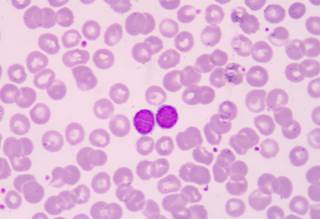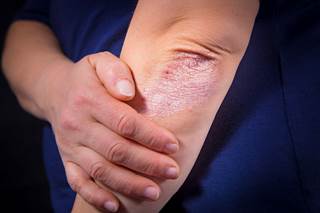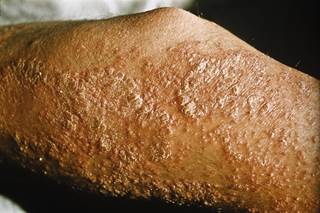February 14, 2019
This article originally appeared
here.Share this content:
 In an effort to effectively address global health concerns, the WHO has announced the 13th General Programme of Work, a 5-year strategic plan spanning from 2019 to 2023.
In an effort to effectively address global health concerns, the WHO has announced the 13th General Programme of Work, a 5-year strategic plan spanning from 2019 to 2023.The health of one country is the health of all countries. Diseases can travel around the world in days, along with the people and vectors that carry and transmit them. With environmental issues setting the stage for eruption of disease on a global level, it has become clear that the medical initiatives of 1 small village or town can only work if the world at large supports it.
In an effort to effectively address global health concerns, the World Health Organization (WHO) has announced the 13th General Programme of Work, a 5-year strategic plan spanning from 2019 to 2023 that hopes to ensure that “1 billion more people benefit from access to universal health coverage, 1 billion more people are protected from health emergencies and 1 billion more people enjoy enough better health and well-being.”
At the center of their efforts, the WHO first identified 10 key issues that are projected to threaten public health this year. At the very top of the list are air pollution and climate change, followed by noncommunicable diseases, pandemic influenza, fragile settings, antimicrobial resistance, recurring pathogens, weak primary care, and vaccine hesitancy. Rounding out the list are continued wide-scale risks of acquiring dengue fever and HIV, 2 diseases that can be largely contained.
Threat No. 1: Air Pollution and Climate Change
The WHO estimates that 7 million people die prematurely every year from diseases such as cancer, stroke, heart, and lung disease, of which about 90% of cases are associated with poor air quality. “Household air pollution using dirty cook stoves indoors causes around 4 million premature deaths every year. About 3 billion people cook using polluting open fires or dirty fuels. Almost half the deaths due to pneumonia in children aged less than 5 years are caused by soot inhaled from household air pollution,” explained María P. Neira, MD, director of the Department of Public Health, Environment, and Social Determinants of Health at the WHO.
Mortality is expected to increase by 250,000 deaths annually between 2030 and 2050 from climate-related malnutrition, malaria, diarrhea, and heat stress. “Awareness of the health effects of pollution and climate change is increasing, and there is much more evidence now that air pollution is responsible for many health issues, ranging from brain development in babies, to heart disease and stroke in adults,” Dr Neira added. The WHO is calling on countries to commit to reaching new designated air quality guideline levels by 2030.
Threat No. 2: Noncommunicable Diseases
Diabetes, cancer, and heart disease collectively cause 41 million deaths worldwide, accounting for more than 70% of global mortality. An estimated 15 million people between the ages of 30 and 60 years die prematurely, the vast majority of those from low- and middle-income countries. The WHO set goals to significantly reduce the 5 major risk factors for all these diseases by 2030, including tobacco use, physical inactivity, overuse of alcohol, poor diet, and air pollution.
Threat No. 3: Pandemic Flu
A pandemic is expected to happen again; the only questions are when and where it will start.
At this time, 153 institutions across 114 countries participate in the WHO’s Global Influenza Surveillance and Response System to monitor and track influenza infections around the world, the data from which are then used to prepare vaccines for the next influenza season. The biggest challenge is the potential for a new strain to develop, particularly in underdeveloped nations that cannot adequately prepare and respond to prevent an epidemic from spreading through global portals.
Threat No. 4: People in Fragile or Vulnerable Settings
Approximately 22% of the world’s population, or 1.6 billion people, live in areas where they are frequently displaced from their homes by war, famine, or climate disasters. One serious consequence for these displaced populations is the loss of access to basic healthcare services, which puts large populations at risk for outbreaks of disease that can then spread worldwide. The WHO has focused on providing continuity of quality care to those in fragile settings, including immunization services.
Related Articles
Threat No. 5: Antimicrobial resistance
The WHO predicts that the era of treating infections such as salmonella, pneumonia, tuberculosis, or gonorrhea with antimicrobial drugs is nearly done, with no other treatments set to replace them. The WHO’s global action plan focuses on increasing awareness, using preventive measures to reduce risks for infection, and careful antimicrobial stewardship among the medical community.
Threat No. 6: Recurring High-Threat Pathogens
There are a number of known diseases that could cause public health emergencies. Pathogens from Ebola to Zika, Nipah to Middle East respiratory syndrome coronavirus and Severe Acute Respiratory Syndrome, among others, are all listed on the international watch list for priority research called the WHO’s R&D Blueprint. These diseases have no effective treatments or vaccines, and can readily spread not only in rural areas but also within densely populated urban zones, particularly during active conflicts that limit access to care. In addition, the WHO continues to focus its efforts on Disease X, the unknown pathogen that can cause a global outbreak at any time.
Threat No. 7: Weak Primary Healthcare
Many countries, particularly those with fewer national resources, fail to provide adequate basic medical care for their populations, creating windows for opportunistic diseases to go unchecked and spread. An estimated half of the world’s population does not have access to care for even the most essential and basic needs. The WHO has committed to partnering with countries to help strengthen primary care globally in accordance with the Astana Declaration.
Threat No. 8: Vaccine Hesitancy
The 2019 WHO initiative states that vaccine hesitancy “threatens to reverse progress made in tackling vaccine-preventable diseases.” An estimated 2 to 3 million deaths annually are prevented by vaccination, which could be further extended to prevent another 1.5 million deaths through improved global vaccine coverage.
One of the target diseases is measles, which has been a recurring issue in countries that were once close to eliminating the disease, including the United States. Globally, there has been a 30% increase in measles cases. “The resurgence of measles is of serious concern, with extended outbreaks occurring across regions, and particularly in countries that had achieved, or were close to achieving, measles elimination,” said Soumya Swaminathan, MD, deputy director general for programmes at WHO. “Without urgent efforts to increase vaccination coverage and identify populations with unacceptable levels of under- or unimmunized children, we risk losing decades of progress in protecting children and communities against this devastating, but entirely preventable, disease,” she added.
Threat No. 9: Dengue Fever
An estimated 40% of the world is now at risk of dengue fever as climate change increases the infectious season in primary areas such as Bangladesh and India while increasing the range of the disease to more temperate countries such as Nepal. Approximately 390 million additional infections are diagnosed per year. The WHO’s Dengue control strategy aims to reduce deaths by 50% by 2020.
Threat No. 10: HIV
Despite tremendous advances in treatment, HIV continues to spread among those who have little or no access to effective treatments. WHO Regional Director for Africa Matshidiso Moeti, MBBS, initiated a call to action on January 18 to end HIV among children in West and Central Africa. “Diagnosis and treatment of children living with HIV is a major challenge. It is unacceptable that only 1 in 4 children living with HIV have access to treatment,” she said. “Most of the children with HIV are receiving suboptimal treatment regimens. This is a particular concern in the [subregions] where drug resistance rates are reaching over 60% in some areas, with only 30% of people on treatment successfully achieving viral suppression.”
Alarmingly, new populations at risk are also being identified. Young girls and women aged 15 to 24 years in sub-Saharan Africa now account for 1 in 4 HIV infections in that region, despite being only 10% of the population. “This is part of the reason why I made adolescent health a priority in the African Region,” Dr Moeti added.
To view the full program, please visit the WHO website.
 Follow @DermAdvisor
Follow @DermAdvisor
Reference
World Health Organization. Ten threats to global health in 2019. https://www.who.int/emergencies/ten-threats-to-global-health-in-2019. Accessed February 8, 2019.






